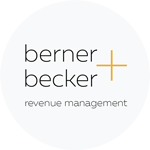Measuring Distribution Costs and Managing Channels
In the hotel industry, discussions about online distribution and revenue management often focus on increasing visibility through a variety of distribution channels or optimizing commission costs per channel. However, managing channels based on demand is rarely mentioned, although the commissions from online travel agencies (OTAs) have significantly increased for many hoteliers in recent years. This is largely because participating in various programs and offers has often been seen as essential to boost revenue.
A fundamental aspect that is often undervalued is the direct assignment of responsibility for distribution costs to the revenue manager.
Analysing these costs presents several challenges that need to be directly addressed:
1. Evaluating profitability of individual channels: Various channels often exist with individual commission and cost agreements, which are rarely documented or remembered. Invoices from these channels are often not assigned to the corresponding bookings but are sent directly to the finance department.
2. Managing distribution channels: It is necessary to regularly assess individual channels against high-demand dates to restrict the least profitable ones. This complex calculation requires an experienced revenue manager or a Revenue Management System (RMS) that considers not only revenues but also costs. Technical requirements for management through a Channel Manager or CRS are a must-have.
3. Measuring one-time fees from Channel Managers and other fixed costs: Many system-related fees are not directly accounted for in revenue management, which complicates the correct assessment and management of costs per booking channel.
Measuring distribution costs by segment further increases complexity, as different segments exhibit varying cost structures and demand patterns. Accurate profitability assessment per channel and segment is crucial to develop new sales strategies, rather than simply increasing commissions or managing channels based on their costs.
Strategies for Controlling Distribution Costs
To effectively control distribution costs, hotels should:
1. Set market segmentation: A thorough assessment of the business mix and appropriate segmentation are crucial.
2. Assign a project team and provide the right tools: This team should conduct in-depth analyses of existing contracts and cost structures and receive regular updates from the accounting department.
3. Evaluate and implement strategy guidelines: Once all data is collected, adjustments to the strategy should be discussed with key stakeholders.
Conclusion
Modern revenue managers must think beyond mere revenue, as the complexity of distribution channels has increased, and various commission costs, setup costs, and kickback agreements must be considered. Through detailed evaluation and adjustment of distribution strategies, significant improvements in profitability can be achieved, even in stagnant markets or during a recession.
It should be the goal of every revenue manager to gain complete control over the distribution landscape and critically examine the current channels and costs.




